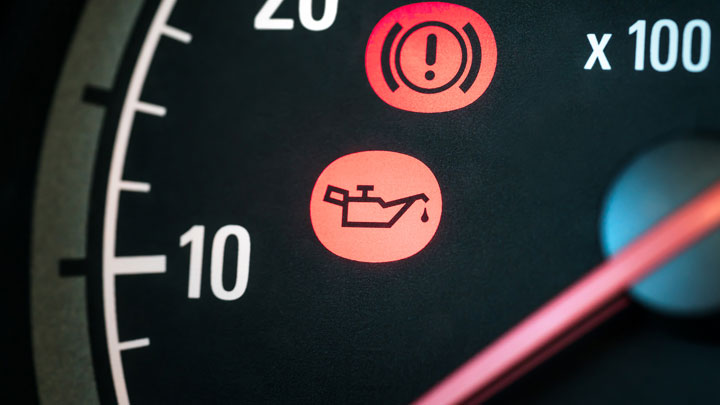The article is written by Riya Veluri, an editorial team member of Industrial Lubricants. After her graduation, Riya works as a website developer & SEO specialist in Lubrication & Tribology Industry & writes technical articles on Lubricants, Lubrication, Reliability & sustainability.
Low Oil Pressure
Table of Contents
The lubricating oil inside the engine will ensure that all moving parts inside the engine are properly lubricated and safe. When the oil flows through the open spaces within your engine, pressure builds up. This pressure ensures that the oil flows to all the parts of the engine. Whent the pessure is too low, and this does not happen, metal parts might come in contact causing friction, wear and tear. In the worst case scenario, the entire engine could be damaged and requires a full replacement. This is why it’s essential to ensure that your engine runs with the correct amount of oil pressure. The pressure of oil is determined in PSI, and the optimal oil pressure depends on the type of vehicle you have. If your pressure is lower than 20 PSI or falls below the normal range of the gauge, it needs immediate attention, and it usuallz a consequence of another problem.
However, it is difficult to determine the cause of low oil pressure. So the best option is to turn the engine off. This article will look at the causes that could be causing low oil pressure and the most efficient ways to fix it.
5 Possible Causes of Engine Low Oil Pressure:
Obstructed or Dirty Oil Filter:
Once the oil has left the pump, it goes through the filter. The filter blocks particles and other contaminants from entering into the engine and helps to keep engine oil free of contaminants. This filter naturally causes resistance to oil flow, but it isn’t disruptive. As the accumulation of dirt increases, the restrictions on the oil flow will become more. This can lead to an oil filter that is completely blocked and allows no oil to flow. To avoid a blockage, the pressure relief valve is opened. The valve automatically opens when the pressure is higher than the set value. The oil will then bypass the oil filter to continue to flow.

Figure 1. An example of Obstructed or Dirty Oil Filter
Not enough oil in the engine:
Even if the right amount of lubricant was added during any oil change, the oil level can quickly lower because of evaporation or burning due to worn piston rings and leaks from the seals or the oil plug. The consumption of oil increases when the engine gets older, and therefore, monitoring oil level and topping it up could be an easy solution. If leaks are visible outside the engine or if there are oil droplets across the flooring, the leaky component should be addressed in the shortest time possible. Also, when the level of oil has dropped, the pump may draw some air from the sump. This could cause the oil to be foamy and aerated. The foaming process can cause an excessive amount of oxidation, reducing the properties of lubrication that the oil has.
Figure 2. How to check your car’s engine oil level?
If an engine is old, it burns the oil. When the engine runs out of oil or with less amount of oil, each 1,000-2,000 miles, it is time to have an overhaul. If the interval between oil changes is overextended or the oil level is not checked regularly, damage of engine internal parts may be possible even if the engine is not that old. Thus, it is essential to follow the proper oil change intervals and test the oil level regularly.
Oil Viscosity:
A low viscosity oil moves more quickly into the engine than high viscosity one. This is because lower viscosity oil produces less resistance to flow, which leads to low oil pressure. Temperatures affect the viscosity of the oil a lot. If you’re using mono-grade engine oil, it is crucial to choose the correct grade, based on the outside temperature. So when you use high-viscosity oil during the summer, it is best to change to a less viscosity during winter to ensure that the oil is not insufficiently thick and cannot flow. If you’re using multi-grade oil, your oil is appropriate for any season and does not need to be changed based on the temperature. When choosing the best grade, follow the instructions of the manufacturer.
Wear and Tear in Engine Parts:
The oil pump does not produce the oil pressure; it is created by the oil flow and the resistance that the flow creates. This resistance is generated through the openings in an engine where oil flows and the amount of clearance between the crankshaft and bearing journals. If the bearings wear out, the pressure will decrease due to increased clearance. This increased clearance for bearings can be reflected in increased engine sounds and pounding. If clearances are higher within the engine, this may result in a reduction in oil pressure. So, maintaining all the engine parts and time to time servicing is a must to maintain the correct oil pressure in the automobile engines.
Defective Oil Pressure Gauge:
Suppose the pressure warning light is on, but you’ve verified that the oil level is at the right level. The engine is also in good operating condition, without unusual noises or temperatures. In that case, it could be caused by a defective pressure gauge sensor unit.
You might want to check the oil pressure using an oil pressure gauge. If the reading is normal, you can replace the pressure sensor. However, if there is a red warning sign or the gauge’s reading is low and persists after the replacement of the sensor, it is most likely due to an oil pump that is not working properly or you should recheck the engine after visiting service centre.
What is the normal pressure of oil?
The exact range of normal oil pressure will differ depending on the kind of engine you own. However, for most semi-trucks, the normal operating oil pressure is 40 and 50 PSI (pounds for every square inch).
Remember that it takes approx 20 minutes to get an engine up to the maximum operating temperature. This is also to be noted that the pressure can also slightly drop if you spend too much time idle. Trucks come with an oil pressure gauge that displays the oil pressure in PSI and an indicator light in case the pressure drops to dangerously low.
It’s important to be aware of any warning lights on your dashboard. The pressure of your oil is among the most important. If the indicator light turns on or you notice the pressure drop across the gauge, you must act promptly to reduce the chances of engine breakdown.
How to lower the risk of Low Oil Pressure?
To minimize the chance of low-pressure oil within your engine, you should change the filter and oil at the appropriate intervals. Also, make sure to use high quality lubricants that maintain the appropriate level of viscosity and quality standards set by the American Petroleum Institute (API).
Make sure you check the oil level regularly and examine your engine (and the garage floor) for any leaks. Additionally, look out for blue smoke coming from the exhaust, especially with high-mileage vehicles.
Do not drive when you notice that the pressure sensor is turned on and you aren’t sure what’s wrong. In the case of fleets using an oil test to identify the condition of the machinery and oil testing is the most effective predictive and proactive method to lower the risk of low oil pressure.
Leave a Reply
You must be logged in to post a comment.


I have a 2003 Passat with only 85,000 miles. About 10 days ago while driving about 20 miles my dash lit up in bold red letters saying “STOP” then “OIL PRES, STOP MOTOR!” then “SERV MANUAL.”
I was advised to buy a new battery, which I did, but this didn’t stop the problem. This was not good, since I am at a very poor time in my life. I’m leaving the car parked, except for some short trips to the grocery store (the lights don’t come on if it is driven less than about 3 or 4 miles). However yesterday I was strongly advised NOT to drive the car.
I’m 75 with a very minimal income. I’m not sure what to do next.
Jack Alustiza
925-895-0221
this is insightful
Thanks Riya